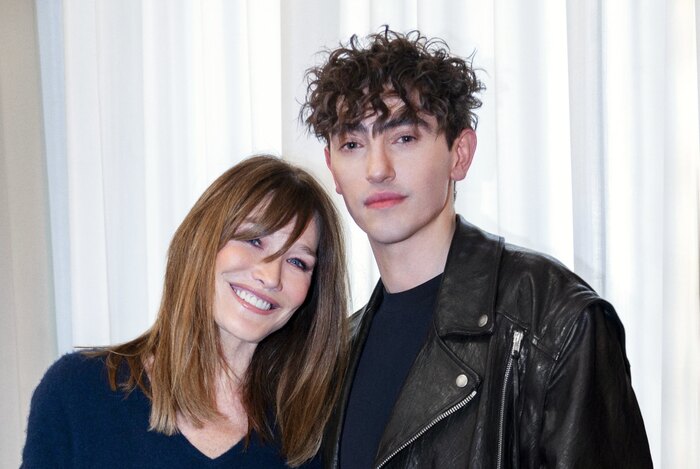For many young people, the Grade II historic building "Mei Ho House" in Shek Kip Mei is a nostalgic check-in place, museum or hostel, but for the "indigenous resident" Xu Lianhuan ( For Sister Huan), Mei Ho House is a place full of memories and a sense of belonging for her entire girlhood growth experience; in recent years, she has joined the Mei Ho House Old Residents Network and became a tour guide, introducing herself to visitors Life in Mei Ho House back then.
"In Mei Ho House, you can learn the Hong Kong spirit of not being afraid of hard work and striving for self-improvement." Sister Huan said.
You may wish to follow Sister Huan and take a cultural in-depth tour!
Mei Ho House is an "H"-shaped first-generation resettlement building. It was well-connected back then, and two buildings could be connected and people could walk around. There were occasional "wine-setting" banquets by neighbors on the ground floor of the atrium, which was very lively.
A willow tree next to Mei Ho House has also witnessed the growth of Mei Ho House.
73-year-old Sister Huan and her family moved into Mei Ho House in 1954 at the age of 5, and did not move out until 1977 when they got married.
Looking back on growing up in Mei Ho House, Sister Huan remembers that although life was difficult at that time, every household would try their best to improve, and the neighbors would help each other.
"Back then, my family of nine, my parents, brothers and sisters, lived in a 120-square-foot unit, just like the current subdivided room; but there were no bunk beds back then, so we built a "cabinet" to separate the upper and lower floors for sleeping. I was a fire victim and moved to Mei Ho House with nothing, so everyone will do their best to "help if you can."
Sister Huan pointed out that it was popular to build "gezi" to sleep on the upper and lower floors.
Human touch dilutes the bitterness of life
What she remembers most is that her parents need to go out to work. The neighbors on the left and right are a couple who make western clothes, and an uncle who makes a living by weaving rattan baskets. “They usually take good care of us and other children. He cooks for us, and the neighbors really don’t care about the rewards, it’s a selfless dedication from the heart.”
The strong human touch dilutes the bitterness of hard life, leaving it as a part of the memory.
Before the revitalization of Mei Ho House, Sister Huan also revisited the old place with her brothers and sisters from time to time, and also contacted the old neighbors.
She said: "Growing up in Mei Ho House, I learned the caring between people and witnessed the indomitable Lion Rock spirit of Hong Kong people; after the revitalization of Mei Ho House, I felt the responsibility to become a tour guide and dictate to the new generation History, so that more people can understand the story of Mei Ho House and learn the spirit of it.”
What Sister Huan said about the life in Mei Ho House in the past, now everyone can "see" the living environment of Hong Kong in the 1950s and 1960s as long as they go to the exhibition.
"As a tour guide, I recommend that everyone must visit the public health facilities. Back then, there were only three toilets for men and one bathroom for men and women on each floor. There was no running water, and you had to bring your own water to take a shower; the bathroom only had a door and an interior. There is no separate door in the cubicle, and the ladies will take a shower together for safety."
Recommended Must-See Bathrooms & Kitchens
In addition, the environment in the house was narrow in those days, and every household would place the fire and water stove in the corridor to become a "kitchen".
"Cooking every day, neighbors gossiping and exchanging dishes. It's very lively. These living environments and conditions will surprise young people! I hope they can meet Hong Kong people of different generations when they visit the Living Museum. Everyone has their hardships, and we all learn from each other and understand that as long as we are strong in adversity and cherish what we have, we will definitely be able to overcome the difficulties!"
Restoring the barber shop in the 1970s, you can see reference pictures of hairstyles for men and women back then.
Mei Ho House Past and Present
On Christmas Eve in 1953, a ruthless fire broke out in Shek Kip Mei, and more than 50,000 victims lost their homes.
At that time, in order to resettle a large number of disaster victims in a short period of time, the government built eight six-storey resettlement buildings with simple designs, and Mei Ho House was one of them.
In 2010, Mei Ho House was rated as a "Grade II Historic Building", and the Development Bureau retained the original site and invested 200 million yuan to revitalize it into a Mei Ho House Youth Hostel, and the two-storey Mei Ho House Living Center was opened to the public. public visit.
The Hong Kong Jockey Club, through its charitable trust, supports the refurbishment of the Mei Ho House Living Centre, as well as a series of community outreach activities.
The brand-new Mei Ho House Living Museum will be reopened at the end of 2022. It has two floors of themed exhibitions called "Love in Time". The exhibition hall on the ground floor has ten themed exhibition areas, showing the daily life of Hong Kong in the 1950s and 1960s; The exhibition hall on the first floor displays the residential units and public spaces of Mei Ho House in the early days, with interactive and multimedia elements, including sound effects, motion-sensing games, etc., allowing visitors to feel as if they were there.
The newly added exhibition areas also include rooftop schools and household "handicraft" industries.
The Jockey Club has always attached great importance to the preservation and revitalization of traditional culture and historical sites, and supported the renovation project of the Mei Ho House Living Museum, aiming to enhance the visiting experience and educational value of the exhibition hall. Through diversified activities such as guided tours and cultural tours, the Participants, especially the younger generation, understand the importance of heritage conservation, enhance community cohesion, and promote inter-generational communication.
"Jockey Club Cultural Inheritance Project@Mei Ho House" has arranged more than 130 community outreach activities related to the content of the exhibition hall to enhance the younger generation's sense of belonging to the community and let the public know more about the history of public housing and communities in Hong Kong and development.
At that time, the residents added the fire and water stove to the homemade wooden box and put it in the corridor to become the kitchen.
Mei Ho House Living Museum
Highlights: Relive the history of public housing in Hong Kong, listen to stories, trace back to the source, and breathe local feelings
*Information provided by: The Jockey Club's publication "Joywalking Life"









